Perhaps none of the shared communist legacies highlighted during North Korean leader Kim Jong-un’s “goodwill visit” to Hanoi is stranger than the embalmed leaders on display in the capital cities of Vietnam and North Korea, and the secretive team of Russian technicians that keeps the aging bodies looking ageless.
Kim on Saturday last week laid a wreath outside Ho Chi Minh’s mausoleum in Hanoi, after the conclusion of his shortened summit with US President Donald Trump.
Inside the dark interior of the mausoleum, the embalmed corpse of Vietnam’s founding father lies displayed in a glass coffin for a steady stream of tourists who silently shuffle by.
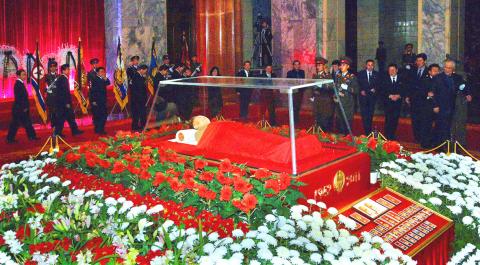
Photo: Reuters
In Pyongyang, Kim Jong-un’s grandfather and father are similarly on display in the loftily named Kumsusan Palace of the Sun, a monument to the cult of personality that surrounds North Korea’s ruling family.
All three leaders were originally preserved by specialists from the so-called “Lenin Lab” in Moscow, which first embalmed and displayed Vladimir Lenin’s body in 1924.
The Soviet Union collapsed, but the same lab performs annual maintenance on Ho, and according to one researcher, still helps North Korea keep the Kims looking fresh.
“The original embalming and the regular re-embalmings have always been conducted by the scientists of the Moscow lab,” said Alexei Yurchak, a professor of anthropology at the University of California, Berkeley, who is writing a book about the embalmed communist leaders. “Over the years they trained local scientists in some techniques, but not all, maintaining the core of the know-how secret.”
Unlike processes such as mummification, the permanent embalming pioneered by Soviet scientists kept the bodies flexible, with unblemished skin and a life-like pallor.
With North Vietnam under regular attack by US warplanes at the time of Ho’s death in 1969, the Soviet Union airlifted chemicals and equipment to a cave outside Hanoi, Yurchak said.
When the Soviet Union collapsed in the 1990s, the government lab needed funding, leading it to offer services to foreign clients, he said.
Among those customers was North Korea, where Russian specialists embalmed both Kim Il-sung and Kim Jong-il at a laboratory built into the mausoleum in Pyongyang.
The original embalming takes several months, and the bodies need regular upkeep.
“Every one-and-a-half to two years, these bodies are re-embalmed by the Moscow scientists,” Yurchak said, citing interviews that he conducted with lab scientists and his own field research.
The Web site for the committee that manages Ho’s mausoleum says that Russia started charging for the chemicals after the Soviet Union collapsed, prompting Hanoi to ask that the supplies be produced in Vietnam.
A source with the committee confirmed that the monument is closed every year for two months and that Russian technicians help with annual maintenance of the body.
The mausoleum lab in Moscow, which since 1992 has been known as the Center for Scientific Research and Teaching Methods in Biochemical Technologies, declined to comment on any aspect of its work.
The North Korean delegation at the UN did not respond to a request for comment.
It is not clear how much North Korea spends on maintaining the bodies of its leaders. When Moscow released preservation costs for the first time in 2016, it reported having spent nearly US$200,000 that year to maintain Lenin.
Originally the embalming was seen as a way of joining the various countries to international communism, as embodied in Lenin.
However, as Vietnam and North Korea developed in their own political ways, so has the meaning attached to preserving the leaders’ bodies.
“Today, this original meaning of these bodies has changed — in Vietnam the body of Ho today stands for anti-colonial struggles for independence and even for new nationalism, much more than for communism,” Yurchak said. “In North Korea, the two Kims’ bodies stand for a self-sufficient country organized around one leader and existing in the face of the ‘imperialist surroundings.’”
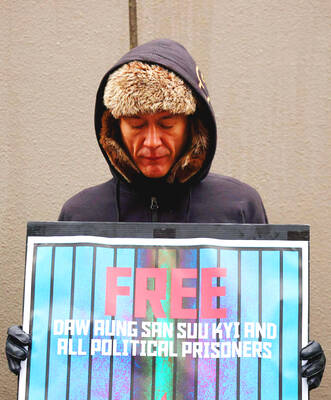
The Burmese junta has said that detained former leader Aung San Suu Kyi is “in good health,” a day after her son said he has received little information about the 80-year-old’s condition and fears she could die without him knowing. In an interview in Tokyo earlier this week, Kim Aris said he had not heard from his mother in years and believes she is being held incommunicado in the capital, Naypyidaw. Aung San Suu Kyi, a Nobel Peace Prize laureate, was detained after a 2021 military coup that ousted her elected civilian government and sparked a civil war. She is serving a
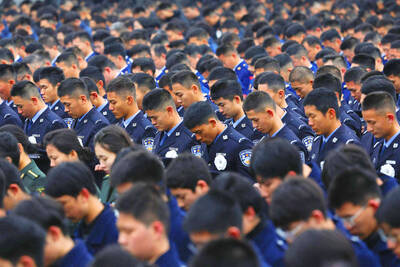
China yesterday held a low-key memorial ceremony for the 1937 Nanjing Massacre, with Chinese President Xi Jinping (習近平) not attending, despite a diplomatic crisis between Beijing and Tokyo over Taiwan. Beijing has raged at Tokyo since Japanese Prime Minister Sanae Takaichi last month said that a hypothetical Chinese attack on Taiwan could trigger a military response from Japan. China and Japan have long sparred over their painful history. China consistently reminds its people of the 1937 Nanjing Massacre, in which it says Japanese troops killed 300,000 people in what was then its capital. A post-World War II Allied tribunal put the death toll
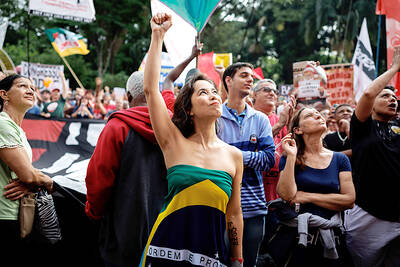
‘NO AMNESTY’: Tens of thousands of people joined the rally against a bill that would slash the former president’s prison term; President Lula has said he would veto the bill Tens of thousands of Brazilians on Sunday demonstrated against a bill that advanced in Congress this week that would reduce the time former president Jair Bolsonaro spends behind bars following his sentence of more than 27 years for attempting a coup. Protests took place in the capital, Brasilia, and in other major cities across the nation, including Sao Paulo, Florianopolis, Salvador and Recife. On Copacabana’s boardwalk in Rio de Janeiro, crowds composed of left-wing voters chanted “No amnesty” and “Out with Hugo Motta,” a reference to the speaker of the lower house, which approved the bill on Wednesday last week. It is
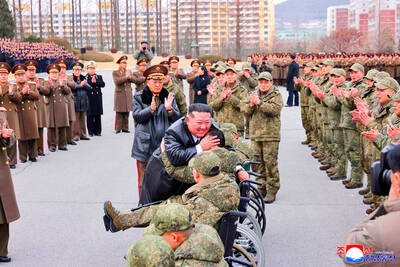
FALLEN: The nine soldiers who were killed while carrying out combat and engineering tasks in Russia were given the title of Hero of the Democratic People’s Republic of Korea North Korean leader Kim Jong-un attended a welcoming ceremony for an army engineering unit that had returned home after carrying out duties in Russia, North Korean state media KCNA reported on Saturday. In a speech carried by KCNA, Kim praised officers and soldiers of the 528th Regiment of Engineers of the Korean People’s Army (KPA) for “heroic” conduct and “mass heroism” in fulfilling orders issued by the ruling Workers’ Party of Korea during a 120-day overseas deployment. Video footage released by North Korea showed uniformed soldiers disembarking from an aircraft, Kim hugging a soldier seated in a wheelchair, and soldiers and officials